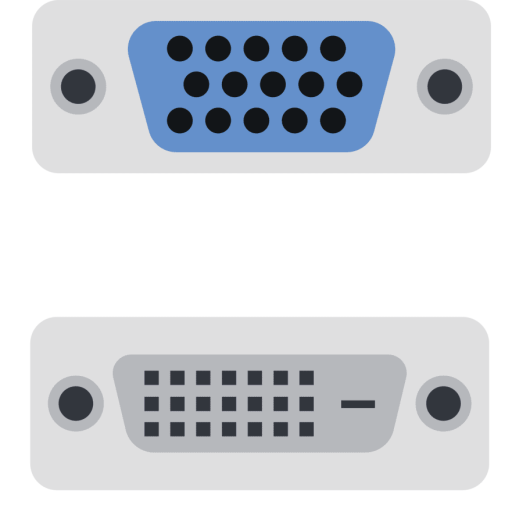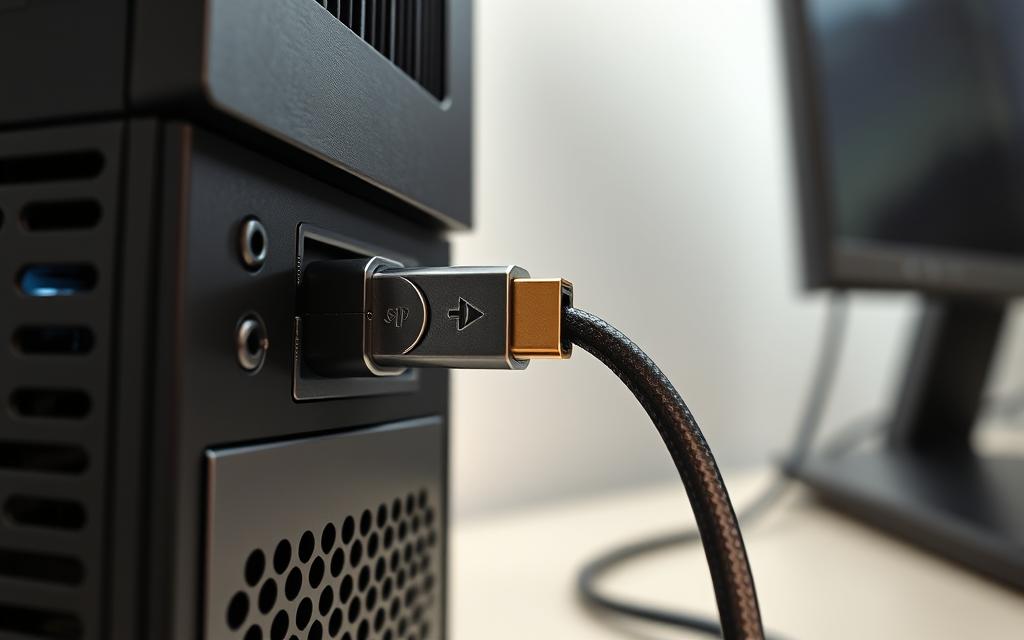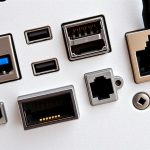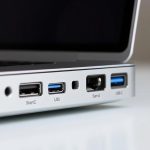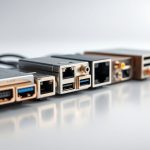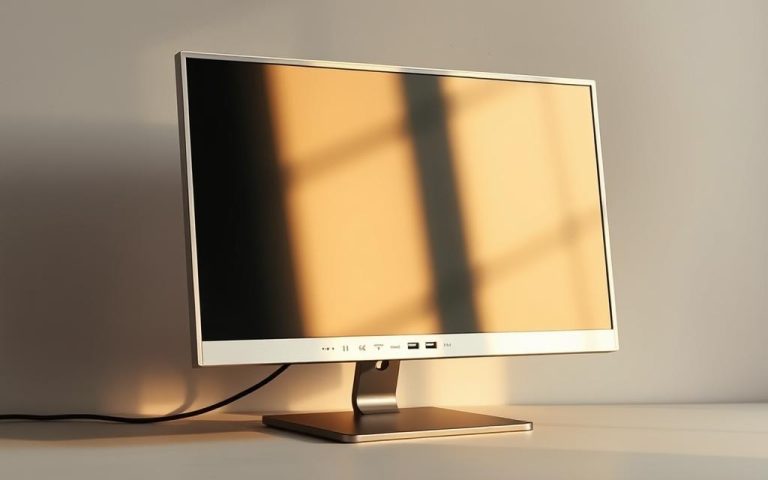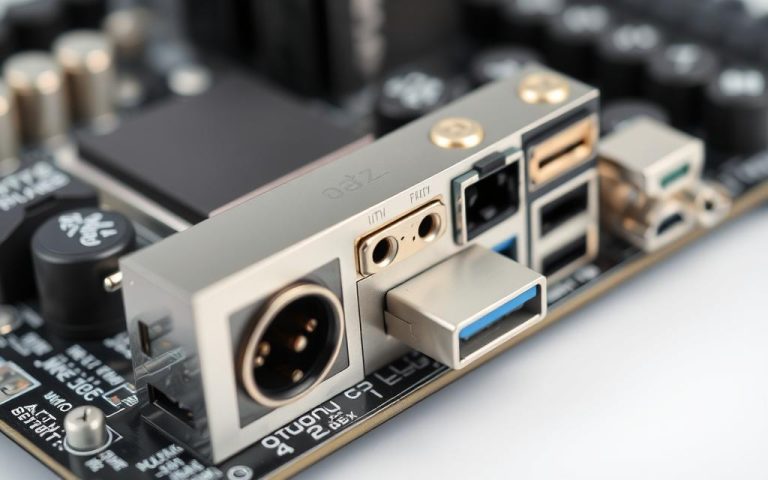Choosing the Right HDMI Port for Your PC Setup
The High-Definition Multimedia Interface (HDMI) has become the standard for connecting computers to high-definition displays, offering superior picture and sound quality while reducing cable clutter.
Selecting the most suitable HDMI port for your PC configuration is crucial for optimal performance. With various HDMI versions and types available, understanding their differences is key to making informed decisions about your computer’s connectivity options.
This comprehensive guide will explore the evolution of HDMI technology, its significance in modern computing, and provide practical solutions for common challenges faced when connecting computers to external displays, ensuring you can make the most of your PC setup.
Understanding HDMI Technology and Its Benefits
HDMI technology has revolutionised the way we connect devices to displays. This interface has become the standard for transmitting high-quality digital video and audio between devices.
What Is HDMI and Why It Matters
HDMI, or High-Definition Multimedia Interface, is a technology used to connect devices such as PCs, gaming consoles, and Blu-ray players to display devices like monitors and TVs. It matters because it enables the transmission of high-definition content with minimal latency, making it ideal for both entertainment and professional applications.
Different HDMI Versions and Their Capabilities
HDMI has evolved through several versions, each offering improved capabilities. The different versions support varying resolutions, refresh rates, and features. For instance, HDMI 1.4 supports 4K resolution at 30Hz, while HDMI 2.0 enables 4K at 60Hz. The latest standard, HDMI 2.1, supports resolutions up to 8K at 60Hz or 4K at 120Hz, along with features like Variable Refresh Rate (VRR) and Auto Low Latency Mode (ALLM), which are particularly valuable for gaming devices and high-performance systems.
| HDMI Version | Maximum Resolution | Refresh Rate | Notable Features |
|---|---|---|---|
| HDMI 1.4 | 4K | 30Hz | Basic 4K support |
| HDMI 2.0 | 4K | 60Hz | Smoother motion, wider colour gamut |
| HDMI 2.1 | 8K | 60Hz | VRR, ALLM, enhanced gaming features |
When selecting an HDMI port for your PC, understanding these version differences is crucial as they directly impact what types of content your system can display and at what quality levels.
Assessing Your Current PC Port HDMI Situation
HDMI ports on your PC are the backbone of your display setup, making it vital to understand what you have.
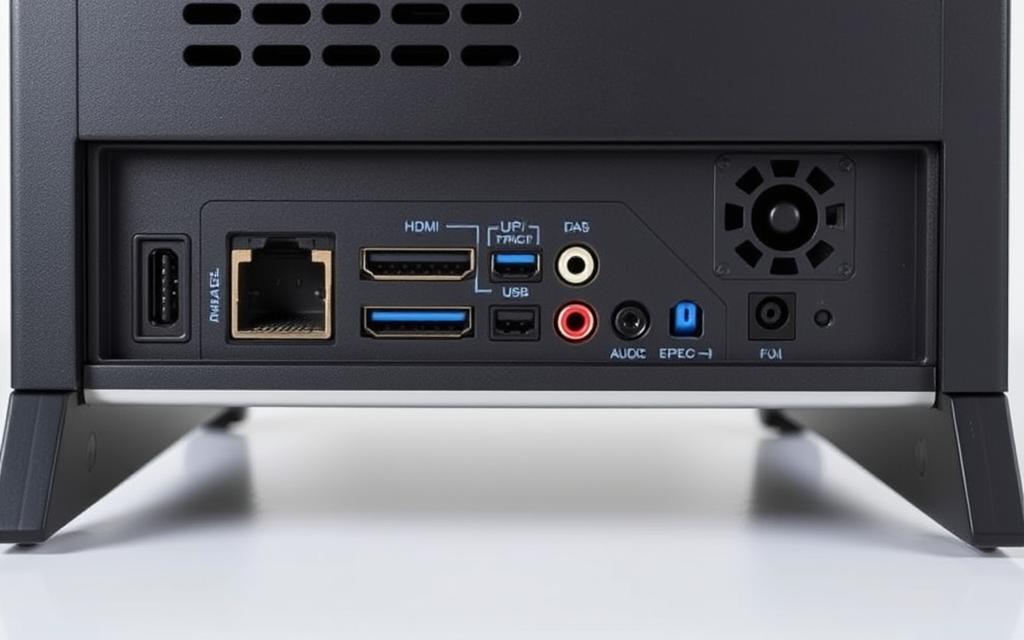
Identifying Existing Ports on Your Computer
To identify the HDMI ports on your PC, start by inspecting the rear and sides of your computer for ports labelled ‘HDMI’. Most modern computers have at least one HDMI port, but the number can vary.
Older computers might still use outdated technologies like VGA or DVI, which have limitations, particularly for high-definition content. HDMI, on the other hand, carries better resolutions and sound, enriching your multimedia experience.
Determining Your Display Requirements
Assessing your display requirements involves careful consideration of how you primarily use your computer and what visual performance characteristics matter most for those applications.
- For professional content creators, colour accuracy and resolution are typically paramount, making HDMI 2.0 or newer versions essential for supporting wide colour gamuts and higher bit depths.
- Gamers should prioritise refresh rate capabilities, with competitive gaming benefiting significantly from HDMI 2.1’s support for 120Hz or higher refresh rates at 4K resolution to ensure smooth, responsive gameplay.
- Multi-monitor setups require planning for sufficient HDMI outputs or alternative connection methods, as most computers come with limited native HDMI ports.
- Future-proofing your display connectivity means considering not just current but anticipated needs, potentially justifying investment in more advanced HDMI capabilities even if your current display doesn’t fully utilise them.
Types of HDMI Ports for PC Setups
Understanding the different types of HDMI ports available is essential for configuring your PC setup effectively. The right HDMI port can enhance your graphics and content display capabilities, ensuring a superior viewing experience on your screens.
Standard HDMI Ports
Standard HDMI ports are the most commonly used connectors for PC setups. They support a wide range of resolutions and refresh rates, making them suitable for general use, including gaming and multimedia consumption. Most modern graphics cards and monitors come equipped with standard HDMI ports, ensuring compatibility and ease of use.
Mini and Micro HDMI Ports
Mini and micro HDMI ports are designed for smaller devices, such as laptops and tablets. While they offer the same functionality as standard HDMI ports, their compact size requires the use of adapters or specific cables for connection to larger displays. These ports are ideal for users who need to connect their portable devices to external monitors or projectors.
HDMI2.1 and Its Advanced Features
HDMI2.1 represents the latest advancement in HDMI technology, offering significantly enhanced capabilities compared to its predecessors. With support for resolutions up to 8K at 60Hz or 4K at 120Hz, HDMI2.1 is particularly valuable for high-end gaming setups and future-proofing against upcoming display technologies. Key features include Variable Refresh Rate (VRR) for eliminating screen tearing, Auto Low Latency Mode (ALLM) for optimized response times, and enhanced Audio Return Channel (eARC) for high-quality audio formats.
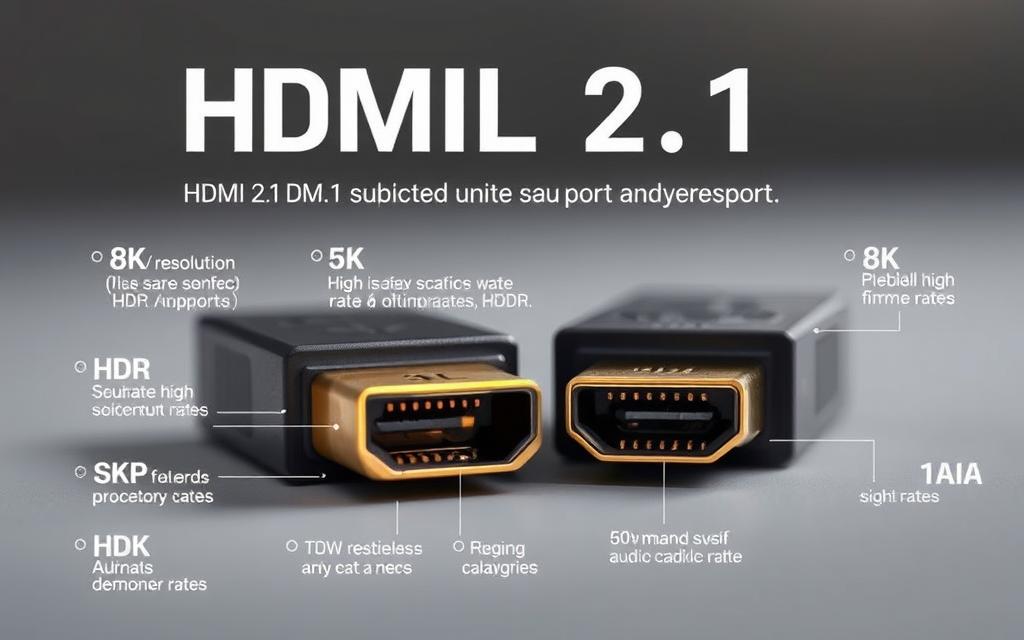
| HDMI Version | Maximum Resolution | Refresh Rate | Key Features |
|---|---|---|---|
| HDMI 2.0 | 4K | 60Hz | Standard HDR support |
| HDMI 2.1 | 8K | 60Hz | VRR, ALLM, eARC, Dynamic HDR |
How to Add HDMI Ports to Your PC
Expanding your PC’s HDMI capabilities can be achieved through a few straightforward methods, enhancing your overall multimedia experience.
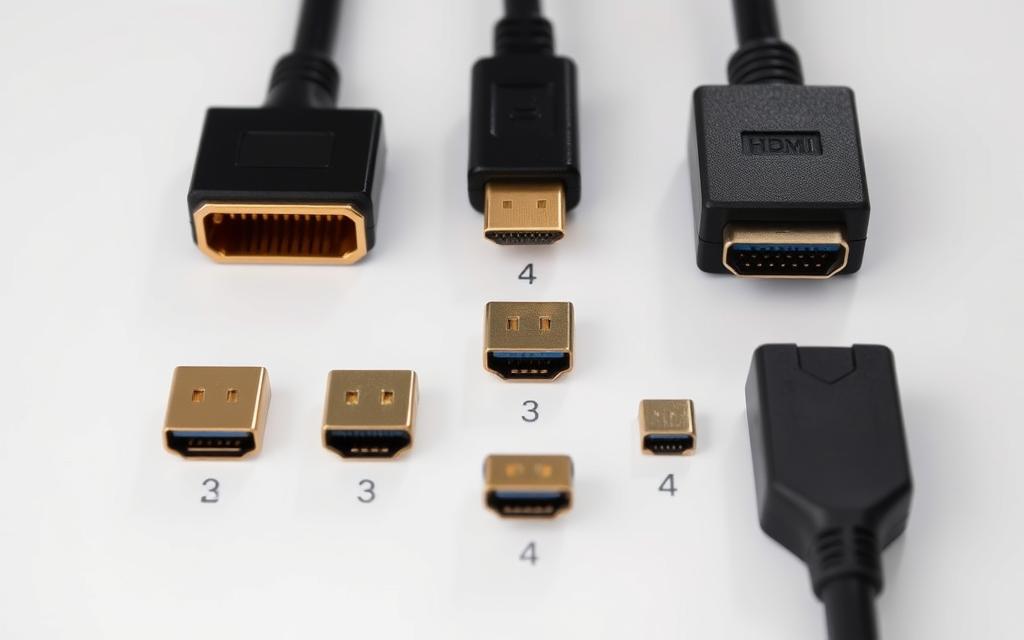
Upgrading Your Graphics Card
One effective way to add HDMI ports is by upgrading your graphics card. Modern graphics cards often come with multiple HDMI ports, providing a straightforward solution to your connectivity needs. This upgrade not only adds HDMI ports but can also improve your PC’s graphics performance.
Using External HDMI Adapters
External HDMI adapters offer a convenient alternative to upgrading your graphics card. These adapters can be connected via USB or other ports, providing additional HDMI connectivity without the need for internal hardware upgrades. They’re particularly useful for laptops or PCs with limited internal upgrade options.
Installing HDMI Expansion Cards
HDMI expansion cards are another viable option, offering dedicated HDMI ports through PCIe slots. These cards come in various form factors and can serve different purposes, including simple display output or complex media capture setups. When selecting an HDMI expansion card, ensure it’s compatible with your motherboard and meets your specific requirements for resolution and refresh rate.
Connecting Multiple Displays Through HDMI
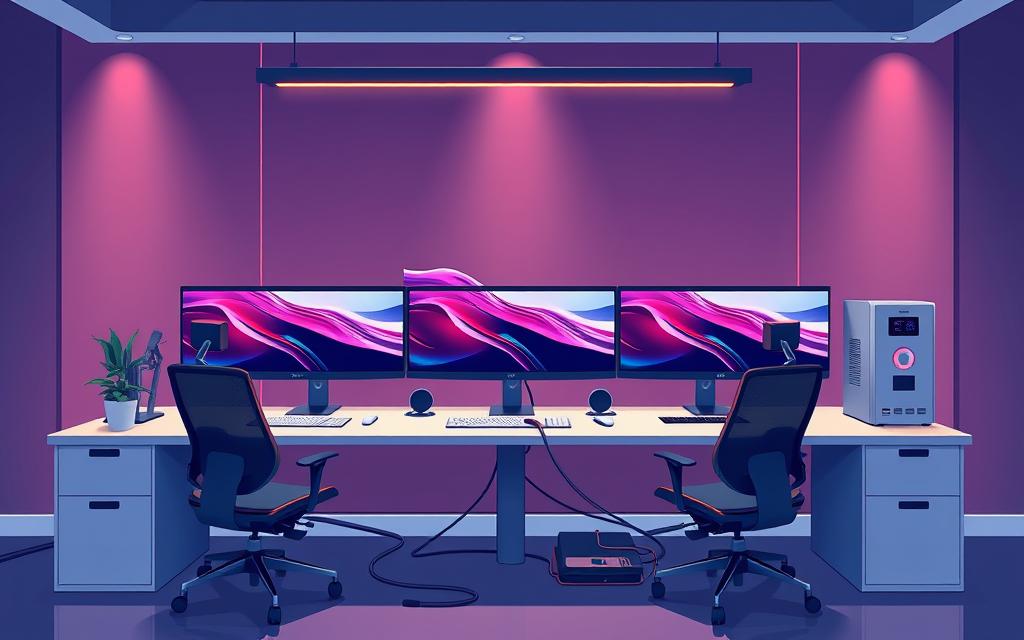
Connecting multiple displays to a single computer using HDMI can significantly enhance productivity and provide a more immersive experience. To achieve this, users have a couple of options to consider.
Using HDMI Splitters and Switches
HDMI splitters and switches are devices that allow you to connect multiple displays to a single HDMI port on your computer. An HDMI splitter duplicates the signal to multiple monitors, showing the same content on each, while an HDMI switch allows you to select which display to send the signal to. For a detailed guide on connecting two monitors to one computer, you can refer to this step-by-step guide.
Configuring Display Settings in Windows
Once you’ve physically connected multiple displays via HDMI, configuring the display settings in Windows is crucial. Pressing the Windows logo key + P on your keyboard presents four primary display modes: PC screen only, Duplicate, Extend, and Second screen only. For more control, you can access Settings > System > Display to arrange monitors spatially, set different scaling levels, and designate a primary monitor. Windows also allows you to configure different resolution and refresh rate settings for each connected display through the Advanced display settings option.
To make sure your multi-monitor setup works efficiently, it’s essential to adjust these settings according to your specific needs. Whether you’re looking to duplicate your screens or extend your desktop across multiple displays, Windows provides the necessary tools to optimise your setup.
Troubleshooting Common HDMI Port Issues
Troubleshooting HDMI port issues is crucial for maintaining a stable and high-quality display connection. HDMI connections are widely used for their ability to transmit both video and audio signals, but they can sometimes present challenges.
No Signal or Black Screen Problems
A common issue with HDMI connections is the “no signal” or black screen problem. This can often be resolved by checking the HDMI cable for damage or ensuring it is properly connected to both the device and the display. If the issue persists, try using a different HDMI port or cable to isolate the problem.
Audio Not Working Through HDMI
When HDMI is used for video, it’s common to also expect audio transmission. However, if the audio is not working, ensure that the graphics settings on your device are configured to output audio through the HDMI connection. You may need to adjust settings within your operating system or graphics driver software.
Resolution and Refresh Rate Issues
Resolution and refresh rate issues can occur with HDMI connections, especially when attempting to use high resolutions or refresh rates. These problems can stem from limitations of the HDMI version, cable quality, or device compatibility. For instance, different HDMI versions support different maximum specifications; HDMI 1.4 supports 4K at 30Hz, while HDMI 2.1 supports 8K at 60Hz or 4K at 120Hz.
| HDMI Version | Maximum Resolution and Refresh Rate |
|---|---|
| HDMI 1.4 | 4K at 30Hz |
| HDMI 2.0 | 4K at 60Hz |
| HDMI 2.1 | 8K at 60Hz or 4K at 120Hz |
To troubleshoot, start by setting your display to a lower resolution and refresh rate, then incrementally increase the settings to identify the limitation point. For graphics-intensive applications, consider enabling technologies like AMD FreeSync or NVIDIA G-Sync if supported by your hardware.
Alternative Solutions When HDMI Isn’t Available
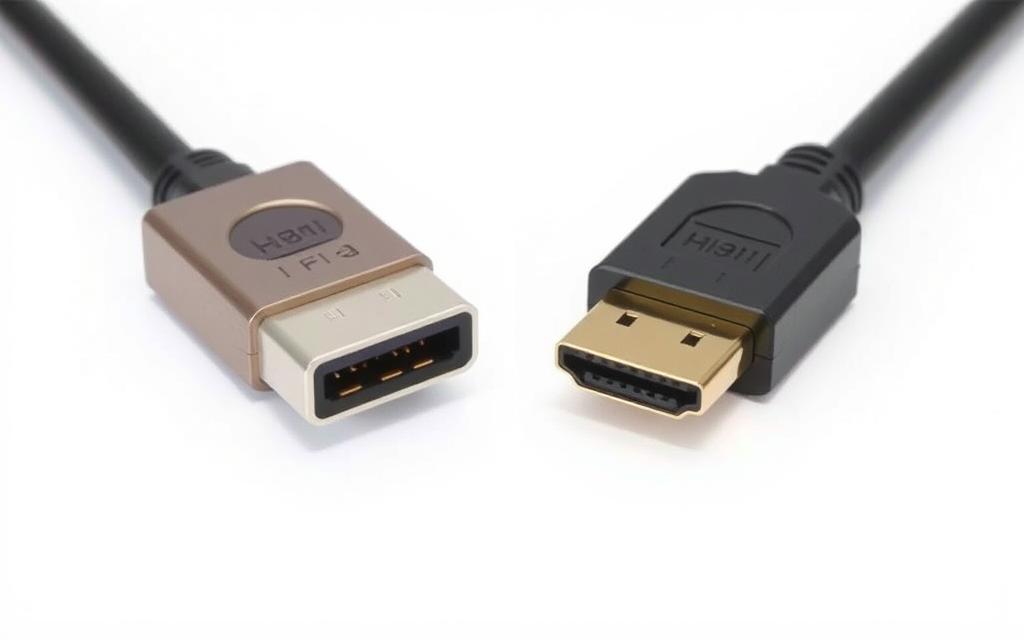
HDMI may be the standard, but there are other ways to connect your devices when it’s not available. In situations where HDMI ports are lacking, two viable alternatives can be considered: using DisplayPort to HDMI adapters or opting for wireless HDMI solutions.
DisplayPort to HDMI Adapters
DisplayPort to HDMI adapters offer a straightforward solution for connecting your PC to an HDMI display when HDMI ports are not available. These adapters convert the signal from DisplayPort to HDMI, allowing you to utilise the HDMI input on your display.
Wireless HDMI Options
Wireless HDMI solutions provide the ultimate flexibility for connecting computers to displays without the constraints of physical cables. About 65% of shoppers prefer wireless HDMI over traditional wired connections due to their ease of use and neatness. These systems typically consist of a transmitter unit that connects to your computer’s video output and a receiver unit that connects to your display’s HDMI input.
Key considerations when selecting a wireless HDMI system include supported resolution and refresh rate, latency figures, transmission range, and whether line-of-sight is required between the transmitter and receiver.
Conclusion
With the right HDMI setup, you can significantly improve your computer’s connectivity and audiovisual experience. This guide has explored various aspects of HDMI technology, from different versions to methods for expanding your computer’s HDMI connectivity options.
For desktop users, upgrading the graphics card is a comprehensive solution, while laptop users can utilise external adapters to convert existing ports to HDMI. When troubleshooting, check all components in the chain, from computer settings to cable quality.
The ideal HDMI solution depends on balancing your requirements for resolution, refresh rate, and connectivity convenience with your budget. By understanding your needs and leveraging the right HDMI technology, you can enhance your computer’s capabilities and enjoy a top-notch audiovisual experience.
FAQ
What is the difference between standard HDMI and HDMI 2.1?
HDMI 2.1 offers advanced features such as higher resolutions, higher refresh rates, and enhanced audio return channel capabilities compared to standard HDMI.
Can I add HDMI ports to my computer if it doesn’t have any?
Yes, you can add HDMI ports to your computer by upgrading your graphics card, using external HDMI adapters, or installing HDMI expansion cards.
How do I connect multiple displays to my computer using HDMI?
You can connect multiple displays using HDMI splitters and switches, and then configure the display settings in your Windows operating system.
Why is there no signal or a black screen when I connect my device via HDMI?
This issue could be due to a faulty HDMI cable, incorrect display settings, or a problem with the device’s HDMI output. Check your connections and settings to resolve the issue.
Can I use a Display to HDMI adapter to connect my device?
Yes, Display to HDMI adapters can be used to connect devices with Display outputs to HDMI displays or TVs.
How do I ensure that my HDMI connection is working properly?
Make sure your HDMI cable is securely connected, and check that your device and display are configured to use the correct HDMI input and output.
What are the benefits of using HDMI over other video connection types?
HDMI offers high-definition video and audio transmission, making it a popular choice for connecting devices to displays and TVs.
Can I use HDMI to transmit audio signals only?
Yes, HDMI can be used to transmit audio signals, but it is typically used for both video and audio transmission.
